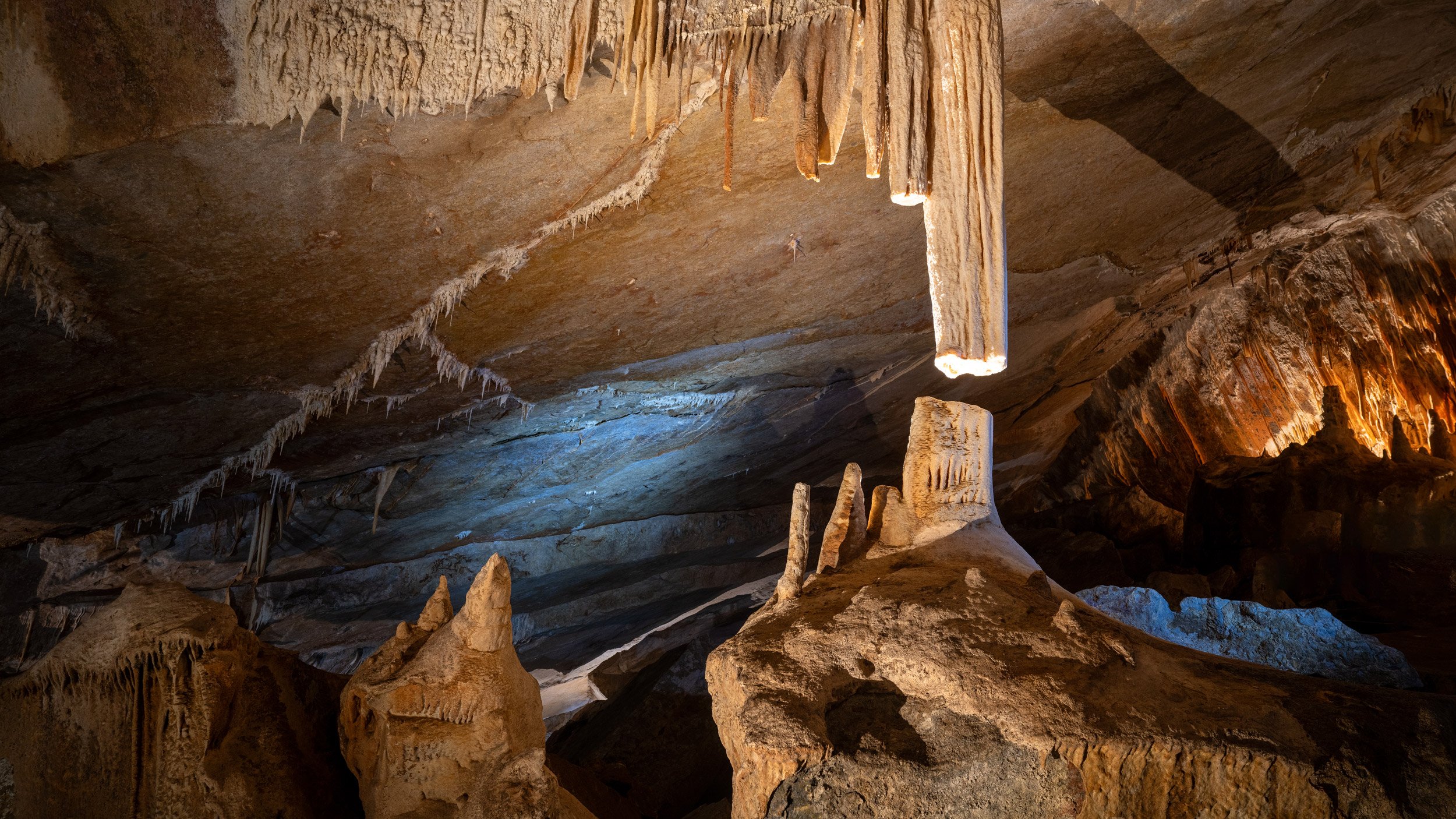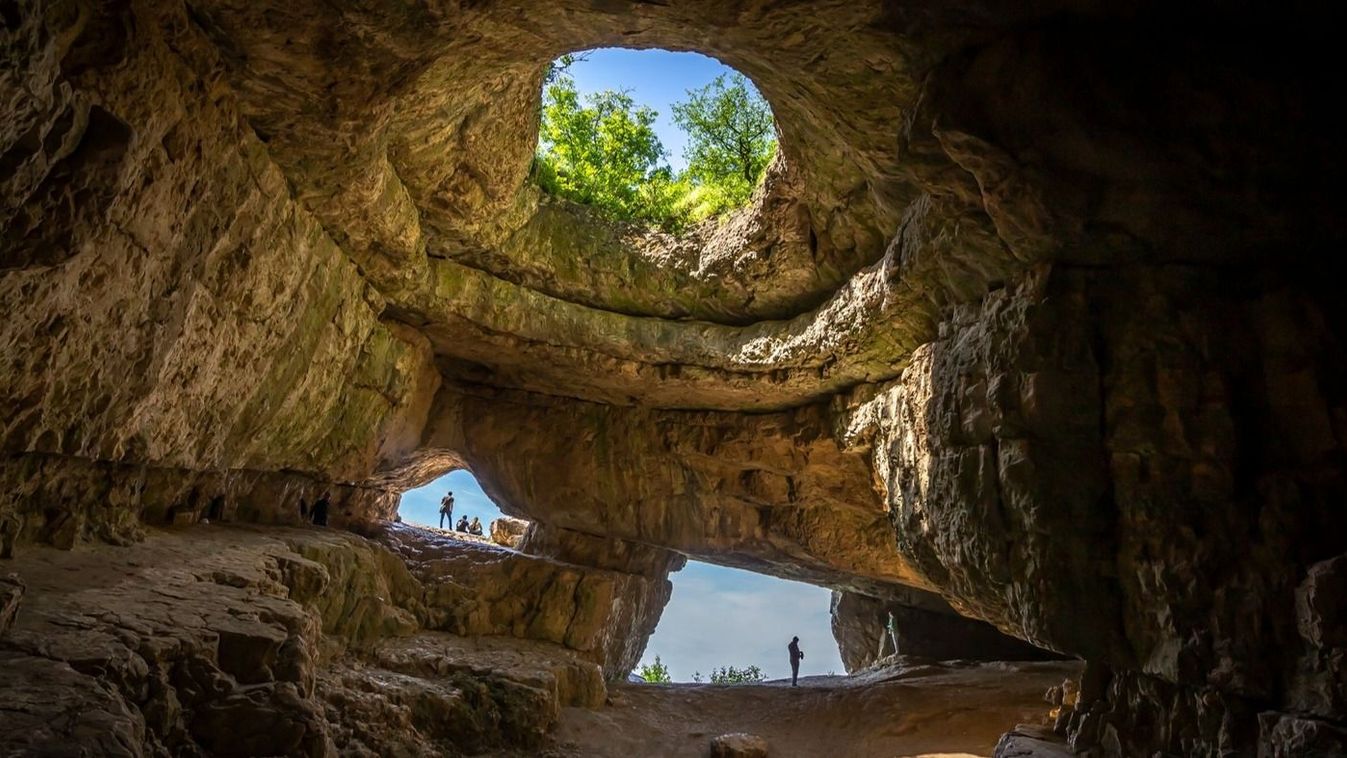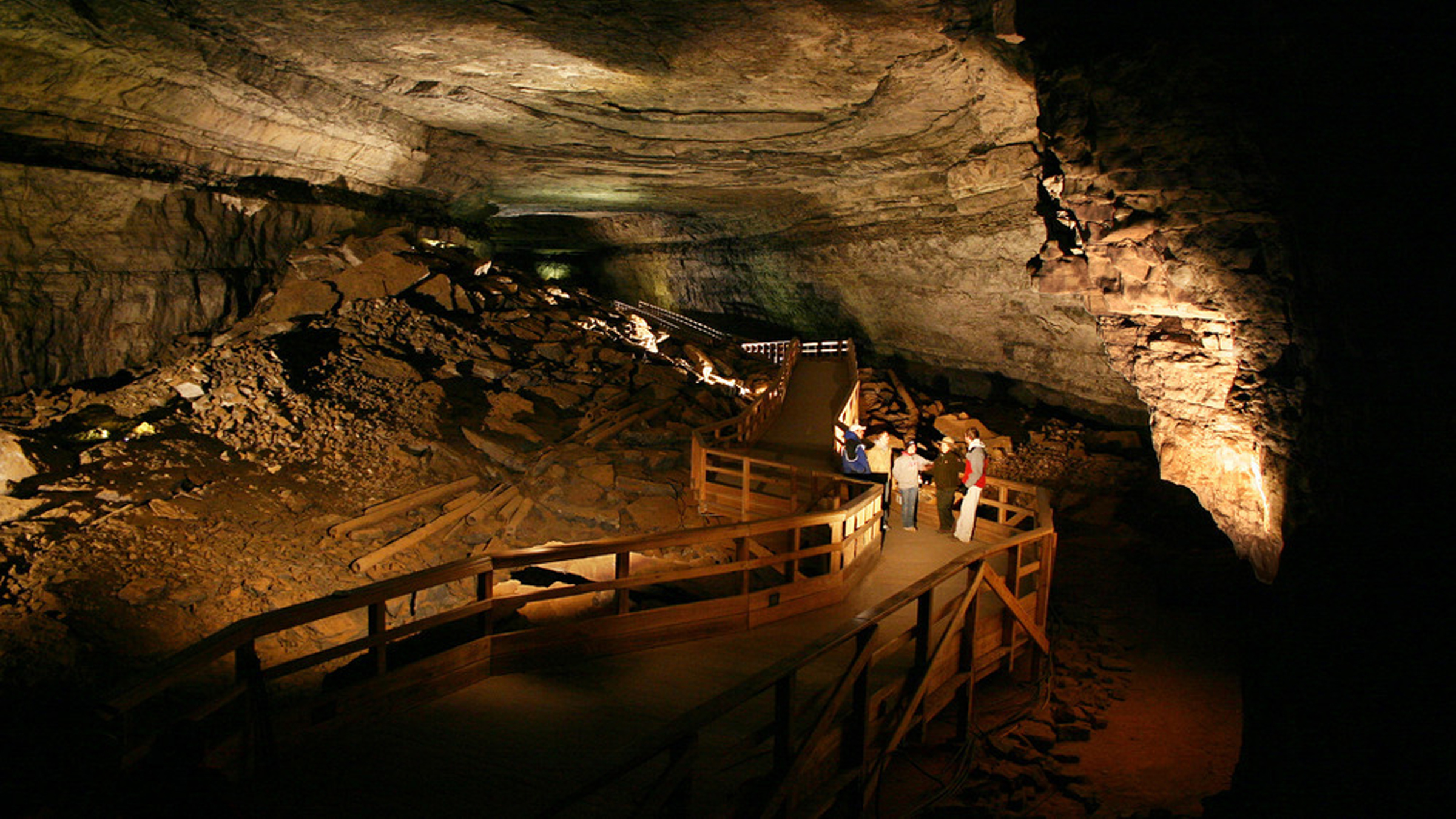Caves are nature's ancient wonders. They've been around for millions of years. Some caves were formed over 100 million years ago through the combined effects of water erosion, volcanic activity, and tectonic shifts. These underground spaces have sheltered humans, animals, and secrets of the past. Many caves hold prehistoric art, fossils, and tools that date back over 30,000 years.
But do you know which is the oldest cave in the world? It's not just old—it's home to some of the earliest known cave paintings. These artworks are believed to be more than 44,000 years old. The cave also contains hand stencils and animal drawings that show early human creativity.
In this article, we'll take a look at five of the oldest caves ever discovered. Each one has a unique story, age, and mystery. From Asia to Europe, these caves connect us to ancient times and the people who once lived in them.
Also Read| List of Top 10 Longest Caves in the World
List of 5 Oldest Caves in the World
Based on geological dating of the cave passages themselves, the Jenolan Caves are often cited as the oldest known and dated open cave system in the world based on clay dating. Additionally, The Sudwala Caves in Mpumalanga, South Africa, are an ancient cave system housed within Precambrian dolomite rock that is approximately 3.8 billion years old. Although the rock is immensely old, the caves themselves are believed to have begun forming around 240 million years ago.
| Rank | Cave Name | Location | Estimated Age of Cave Formation (Speleogenesis) | Dating Method/Notes |
| 1 | Jenolan Caves | New South Wales, Australia | ∼340 Million Years | Dated using potassium-argon dating of clay minerals found within the caves. Cited as the world's oldest known and dated open cave system. |
| 2 | Sudwala Caves | Mpumalanga, South Africa | ∼240 Million Years | Carved into ancient Precambrian dolomite (rock layers are ∼2.8 billion years old). The formation of the cave passages themselves is estimated at ∼240 million years ago (Karst formation). |
| 3 | Grotte de la Devèze | Languedoc, France | ∼200 Million Years | Geological estimates based on the surrounding Jurassic limestone and regional tectonic history. |
| 4 | Fumane Cave | Verona, Italy | ∼180 Million Years | Geological estimates based on the surrounding rock formation (Neogene Period). Also noted for early modern human presence. |
| 5 | Movile Cave | Dobrogea, Romania | ∼5.5 Million Years | Estimated age of the cave's isolation and development, which led to a unique chemosynthetic ecosystem. |
| 6 | Vértesszőlős Cave | Vértesszőlős, Hungary | ∼4 Million Years | Estimated age of the cave system, also an important archaeological site for early Homo species. |
| 7 | Mammoth Cave System | Kentucky, USA | ∼10 Million Years | Dating of river terrace gravels and other geological evidence gives a minimum age, with the oldest parts possibly much older. It is the longest-known cave system in the world. |
| 8 | Sterkfontein Caves | Gauteng, South Africa | ∼3.5−4 Million Years | Famous as a paleoanthropological site, its formation dates back millions of years into the Pliocene. |
| 9 | Cango Caves | Western Cape, South Africa | ∼2 Million Years | Estimated age of formation, with the surrounding limestone rock being much older. |
| 10 | Magura Cave | Vidin Province, Bulgaria | ∼15 Million Years | Geological estimate of formation in the ancient limestone. Also known for prehistoric paintings. |
1. Sudwala Caves, South Africa

Sudwala Caves are geologically recognized as the oldest known caves in the world, estimated at a staggering 3,800 million years old, formed in Precambrian dolomite rock. These natural limestone formations are located in Mpumalanga and were used by hominids and prehistoric mammals long before Homo sapiens appeared.
The region’s dolomite is among the oldest on Earth, offering scientists clues about continental formation. While they are not noted for prehistoric artwork, their unparalleled geological age makes them a valuable window into our planet’s ancient history, substantiated by Guinness World Records and geological studies.
2. Jenolan Caves, Australia

Jenolan Caves, located in the Blue Mountains, New South Wales, are among the world's oldest open cave systems. Scientific dating of the clay found within the caverns, using the potassium-argon method on the mineral illite, has established a minimum age of approximately 340 million years. The limestone host rock, known as the Jenolan Limestone, formed even earlier, around 430 million years ago during the Silurian period.
The caves themselves formed as mildly acidic water began dissolving the rock. This extended geological history, spanning hundreds of millions of years, makes Jenolan a globally significant karst landscape. Its formation precedes the age previously estimated by up to 300 million years.
For You| List of 5 Largest Caves in the World
3. Grotte de la Devèze, France

The Grotte de la Devèze, also known as "The Palace of the Glass Spinner", is a well-known tourist cave in Courniou, France. The cave is particularly famous for its spectacular and intricate speleothems, which are so fine and fragile they resemble spun glass—a result of calcite and aragonite formation. The karst cave is developed within marble rock.
Although its geological formation spans millions of years, the cave was discovered in 1886 during the construction of a railway and was intensely explored by speleologists, including Édouard-Alfred Martel, in 1893. The internal environment is characterised by a constant temperature of 12 °C. The entire mapped length of the system is approximately 3,200 metres.
4. Fumane Cave, Italy

Fumane Cave is a crucial paleoanthropological site in northeastern Italy, providing a detailed stratigraphic record of the Middle and Upper Palaeolithic periods. The site was occupied between 100,000 and 10,000 years ago, documenting the transition from the last Neanderthals (Mousterian culture, ending circa 44,000 BP) to the earliest modern humans (Homo sapiens).
Key finds include four deciduous human teeth and a fragment of a shell suggesting symbolic behaviour among the Neanderthals. The cave also contains some of the oldest cave art in Europe, painted fragments dated to between 32,000 and 36,500 BP, contemporary with the early Aurignacian occupation.
5. Movile Cave, Romania

Movile Cave, discovered in 1986 near the Black Sea coast, is famous for hosting a unique, isolated subterranean ecosystem. It has been sealed from the surface for approximately 5.5 million years. This isolation resulted in an environment with high levels of sulphur compounds, including hydrogen sulphide and carbon dioxide (1.5–3.5% CO₂ vs. 0.03% on the surface), but with low oxygen (7–16% O₂).
This extreme habitat supports life not based on photosynthesis but on chemosynthesis by sulfur- and methane-oxidising bacteria. The cave hosts over 50 species of invertebrates, with 37 being endemic (found nowhere else), having evolved completely separately from the outside world.
6. Vértesszőlős Cave, Hungary

Vértesszőlős is a critical Palaeolithic site in Northwest Hungary, best known for the hominin fossil "Samu", a fragmentary skull piece of Homo heidelbergensis. The site is dated to the transition between the Early and Middle Pleistocene, around 310,000 years ago (310 ka). The cave deposits are associated with hot springs, and the fossil remains are preserved in fine travertine rock.
While the hominin remains are the most famous find, the site also contains numerous fossil tracks from various mammals and birds. The evidence from Vértesszőlős is essential for understanding human dispersal and evolution in Central Europe during this period.
In Case You Missed| Top 10 Deepest Caves in the World
7. Mammoth Cave System, USA

The Mammoth Cave System in Kentucky is the world's longest known cave system, with over 426 miles (686 km) of passages currently mapped and continuing to grow. The system developed in thick Mississippian-aged limestone strata, deposited about 330 million years ago when the area was covered by an ancient ocean.
The caves themselves formed over the last several million years through the dissolution of limestone by water, creating a vast, multi-level labyrinth. The passages, which feature underground rivers and lakes, host a diverse range of unique cave-adapted species, including eyeless fish and crayfish.
What Is The Oldest Cave In The World?

The oldest known cave system in the world is the Jenolan Caves in the Blue Mountains, Australia. Geological evidence indicates that this immense limestone network has been forming and evolving for at least 340 million years, dating back to the Carboniferous period. This makes the caves significantly older than the Blue Mountains themselves and even the age of the dinosaurs, which became extinct around 65 million years ago.
What Is The Oldest Human Cave In The World?

Identifying the absolute oldest human-occupied cave is complex due to ongoing discoveries, but the Wonderwerk Cave in South Africa provides some of the earliest evidence of intentional cave dwelling by human ancestors.
Archaeological findings in the deepest layers of Wonderwerk include stone tools dating back approximately 2 million years, suggesting early hominids like Homo habilis were intentionally utilizing the cave for shelter, not just passing through.
Another significant site is the Blombos Cave, also in South Africa, which contains the world's oldest known drawing, a cross-hatched pattern on a stone fragment estimated to be 73,000 years old, indicating early symbolic behavior.
Which Is The Most Famous Cave In The World?

The Mammoth Cave System in Kentucky, USA, is arguably one of the most renowned globally. Its fame stems primarily from being the longest cave system in the world, with over 676 kilometres (420 miles) of explored passageways, and it is a UNESCO World Heritage Site.
Other contenders for fame include the Lascaux Cave in France, famous for its prehistoric cave paintings, and Son Doong Cave in Vietnam, celebrated as the world's largest single cave passage.
What Is The Deepest Cave In The World?

The deepest known cave in the world is the Veryovkina Cave, located in the Arabika Massif of the Western Caucasus mountains in Abkhazia, Georgia. Its confirmed depth descends to approximately 2,212 metres (7,257 feet) below its entrance. This extreme depth makes it a premier destination for experienced speleologists and one of only two known caves on Earth to exceed a depth of 2,000 metres.
What Is The Rarest Cave?
One of the world's rarest and most unique geological phenomena is the Cave of the Crystals (Cueva de los Cristales), located in the Naica mine in Chihuahua, Mexico. Discovered in 2000, this cave is extremely rare because it hosts the largest natural crystals ever found, with some selenite (gypsum) crystals reaching up to 12 meters (39 feet) in length.
Its formation required extremely specific conditions: a geothermal heat source below kept mineral-rich groundwater at a steady, high temperature of about 50°C for hundreds of thousands of years, allowing the crystals to grow to colossal sizes. Due to its extreme heat and near 100% humidity, the cave is virtually inaccessible without special protective gear, adding to its rarity.
What's Next| Which Mountains Are Called the Blue Mountains?

Comments
All Comments (0)
Join the conversation